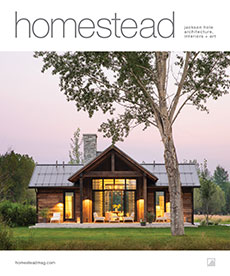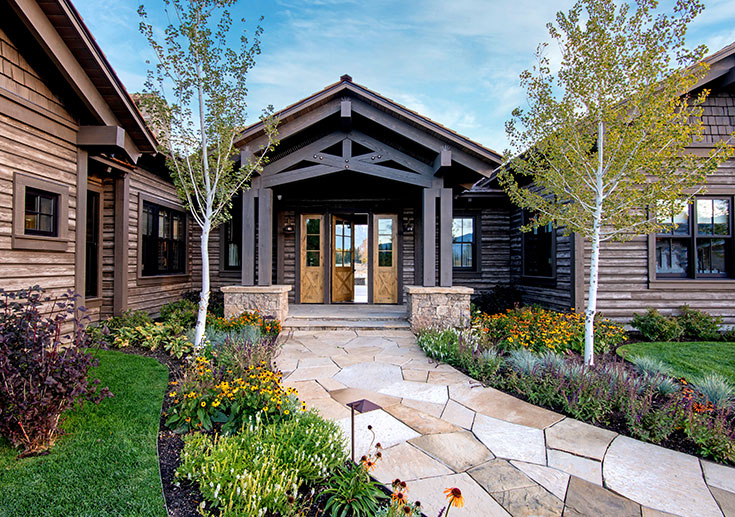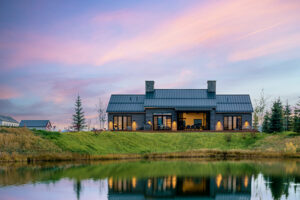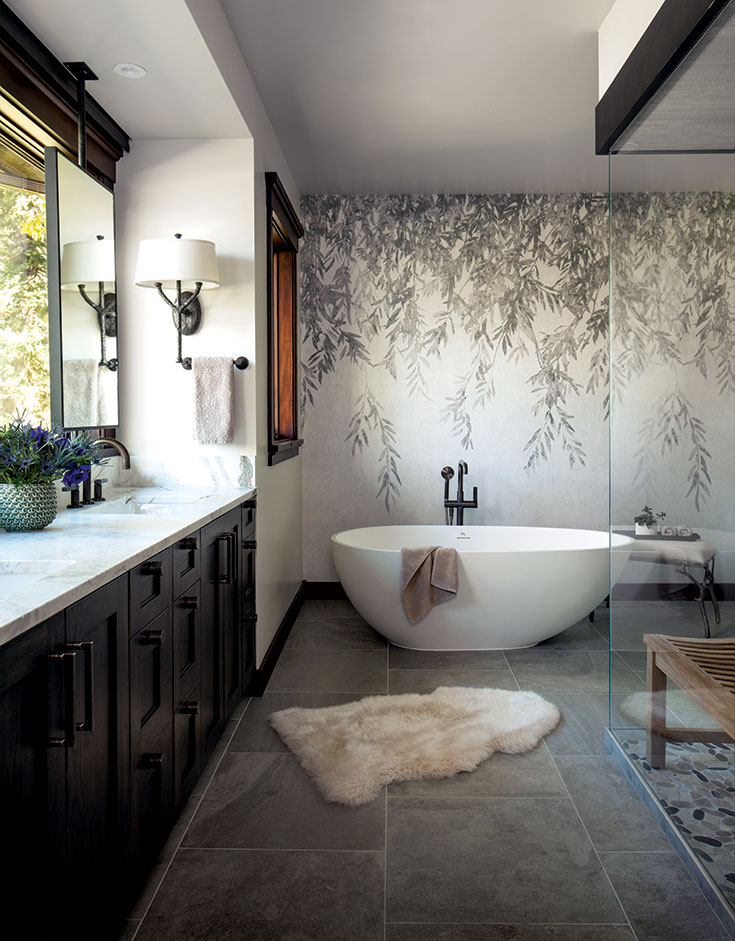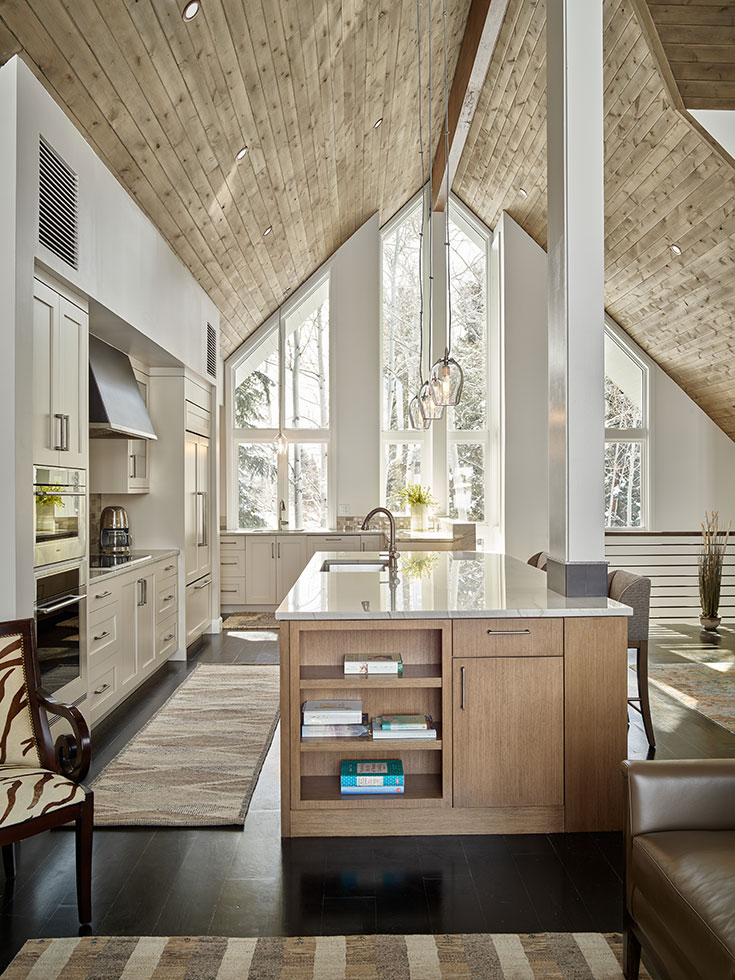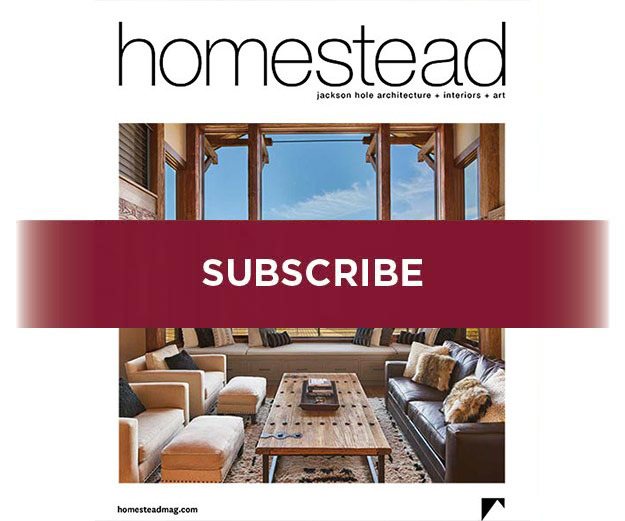+ Story by Alisan Peters
+ Photography by David J. Swift
Teamwork can be a beautiful thing. Especially when play is involved. In the case of Jackson architect Larry Berlin and interior designer Agnes Bourne, a certain serendipitous quality comes naturally to their relationship: Play, in all its senses, was an integral element of their collaborative effort this single-family residence tucked away on a quiet street in East Jackson.

The play of mass and depth, of light and shadow, steel and stone creates a dynamic energy for this residential structure in East Jackson.

From the rustic exterior to the whimsical interior, play is crucial. Note the tension between light and shadow, between rough and polished, between open and closed, new and reclaimed, between balanced and weighted.
“The architecture is a simple form, really, but with a slight offset,” says Berlin. “The original concept was to try to bring to market something that was contemporary, yet rustic, and family oriented but with industrial components.” In sourcing his materials, Berlin made an effort to stay with purveyors in the region. Bourne adds, “There’s a balance of those materials. Some are dominant, some subordinate, and some are accents. The whole is very clever in that there’s an intelligent use of materials that reflects both the climate and the setting.”
For the exterior, Berlin sourced Montana moss rock and reclaimed wood from a mine. Rocky Mountain quartzite from Idaho formed the pavers of the walkway that snakes between houses. Local plantings of aspen march along one side of the house, while on the opposite side, a communal garden provides a respite from the summer sun.

The work areas of the home are integrated seamlessly—and stylishly—while color choices provide a zing of energy.

Bourne’s self-designed “Tao” yellow chairs play with the inflow of light through both the angles of their components and the holes in their backs. The Tao are part of the permanent collections at the San Francisco Museum of Modern Art and the Cooper-Hewitt National Design Museum.

A small yet functional space is airy due to careful selection of details, including porcelain-and-chrome sinks, limestone floor and backsplash, and pendant lights from Philippe Starck for Flos. The encaustic-and-found-object triptych on the far wall is by Johannes Girardoni.
Inside, steel I-beams race along the ceiling. Three different lighting systems include passage lights set into the ceiling; pendants of Holophane prism glass that intensify ambient light for the room; and a cable system known as Birdie (inspired by the badminton birdie) for task lighting in the kitchen area and, on the opposite side of the room, the copper-backed media cabinet. Segmented, wrap-around windows enhance airflow and are set horizontally to mimic more industrial applications. The mullions create a play of light as the sun moves westward through the day, a feature Bourne loves. “There are fantastic views from these windows, up Cache Creek, up Snow King and north to the Tetons.”

Shadows from mullioned windows play across various elements of the great room, bringing both light and energy to the interior. Artwork gracing the back of the kitchen island startles since it so faithfully captures the exterior scene: “Orchard in Winter” by Carl Dern.

A serene space with magnificent views, here’s a perfect retreat with its crow’s-nest view of the great room.

This custom-designed daybed was made to the dimensions of the person in the household who most likes to nap on it. In short order, it serves as a dining bench for a quick meal atop the silvered packing crate.
The home was built in five levels. From the entry level, a visitor can descend half a level, or continue up a half-level to the master bedroom suite. Up a full level from the entry is the great room, designed by Bourne to be less about defined spaces and more about materials and form that speak to the space they inhabit. The final level of the home serves as office space, and while open to the great room, it is recessed enough to provide a sublime sense of privacy for detailed work.
“We’re both artists apart from our formal training in our fields,” Berlin says. Bourne holds degrees in art and psychology, Berlin in architecture, with a minor in art. “That flexibility is an important part of how we see and think about art and design.”
